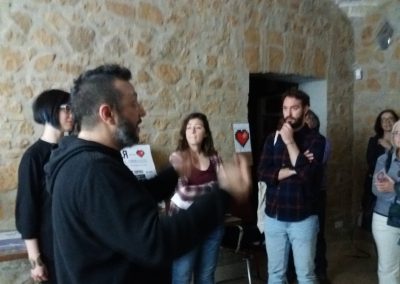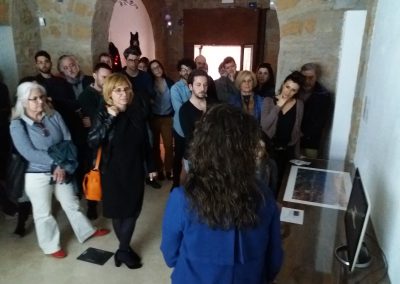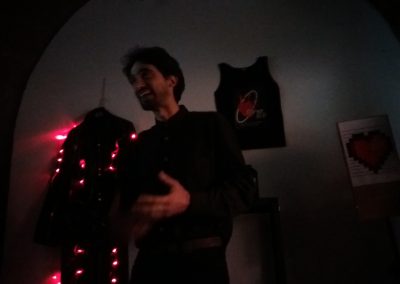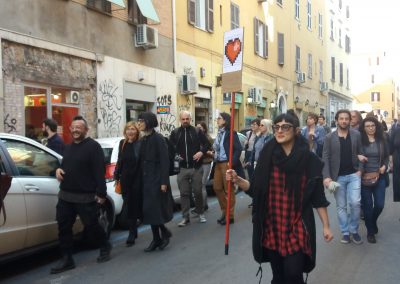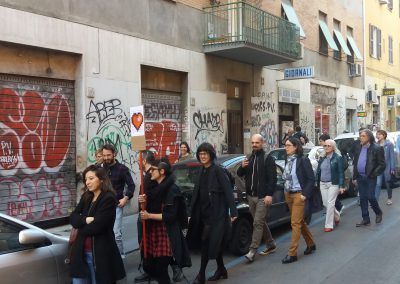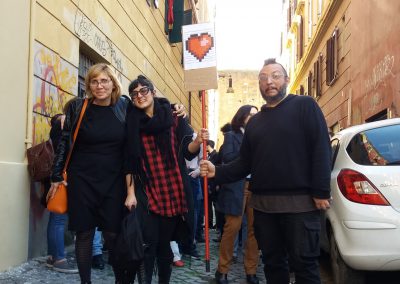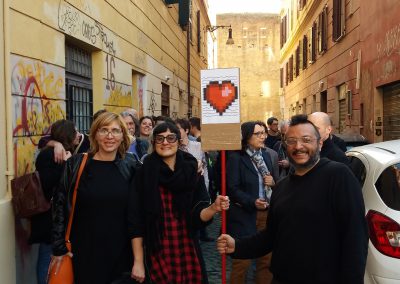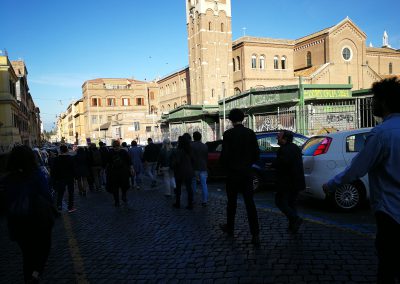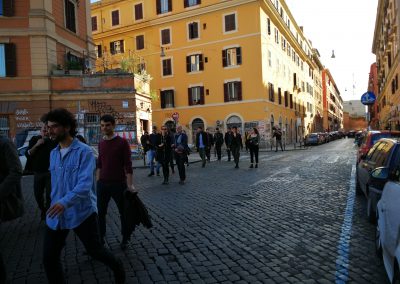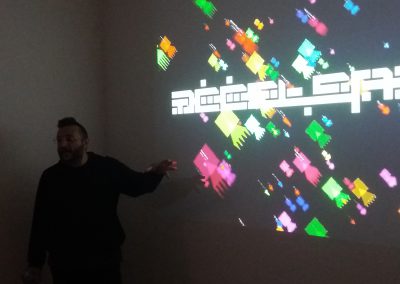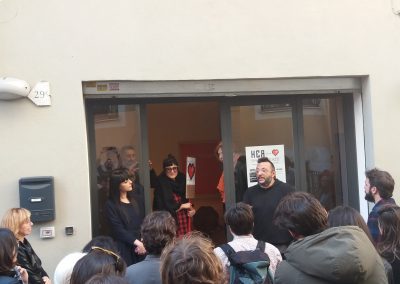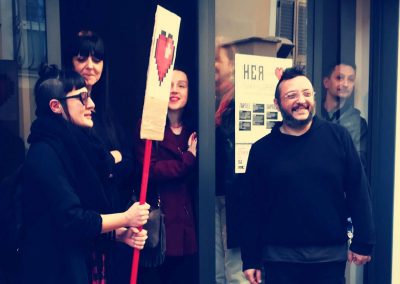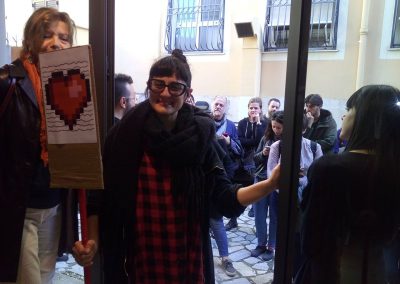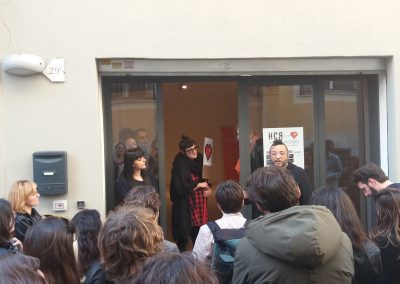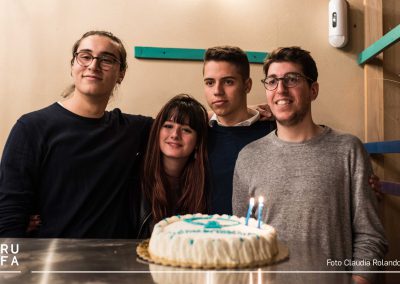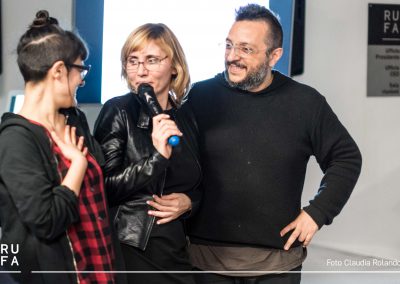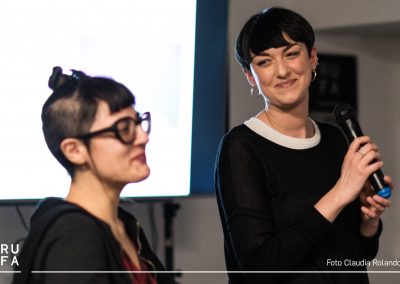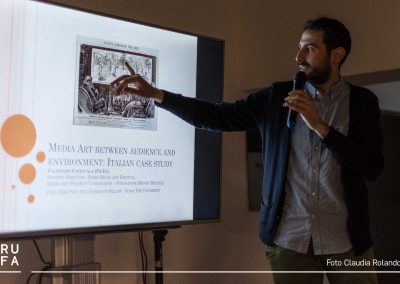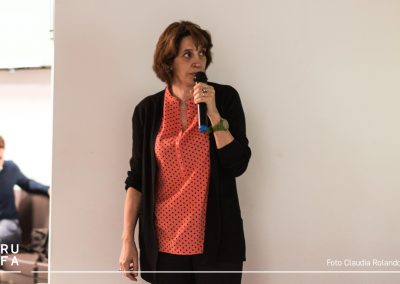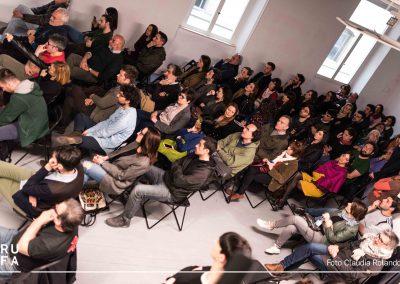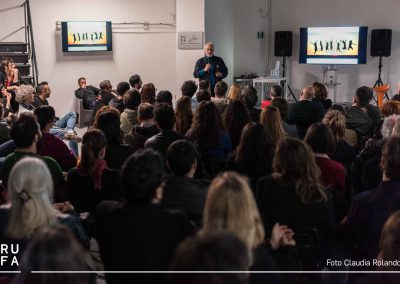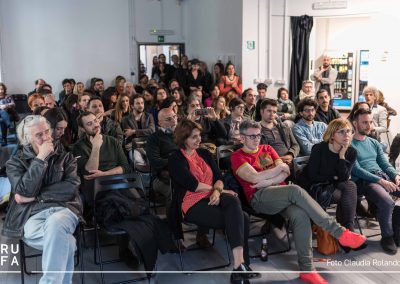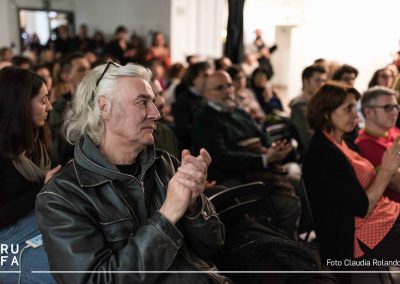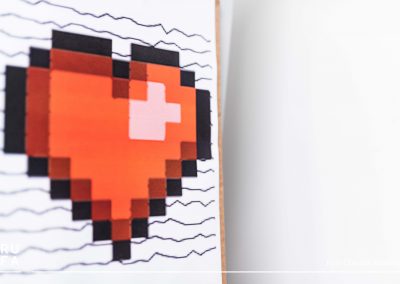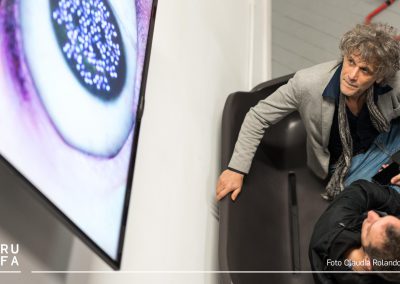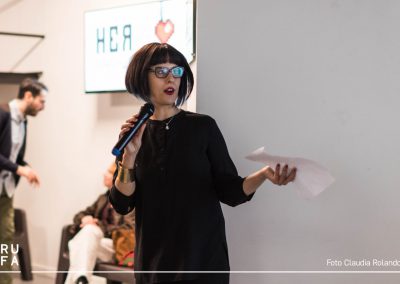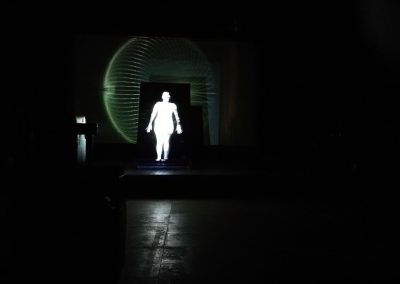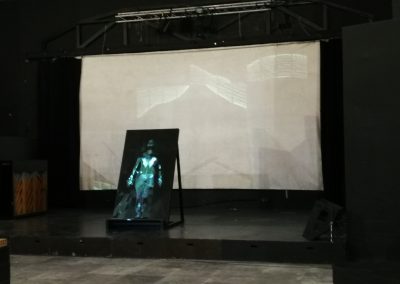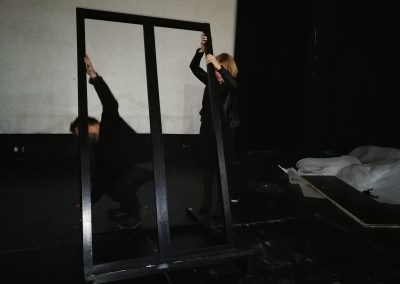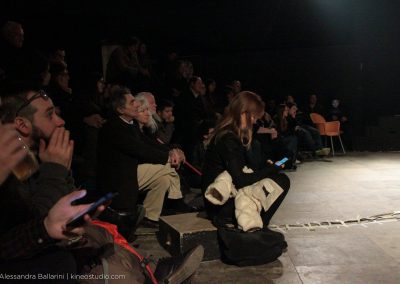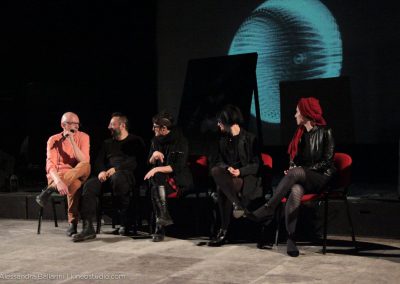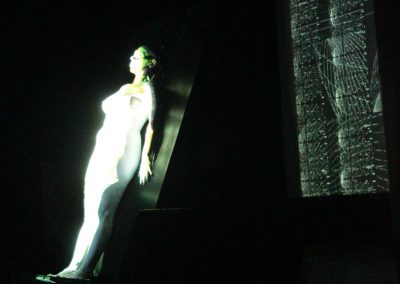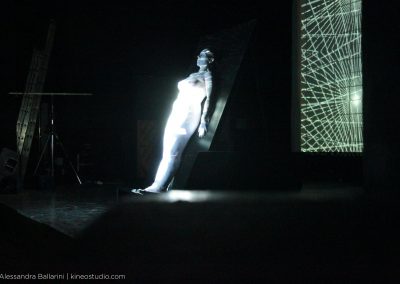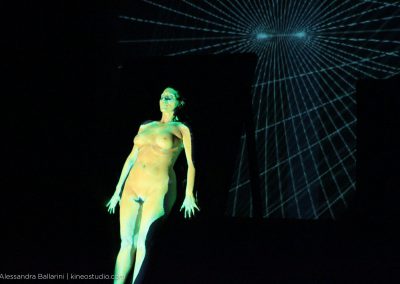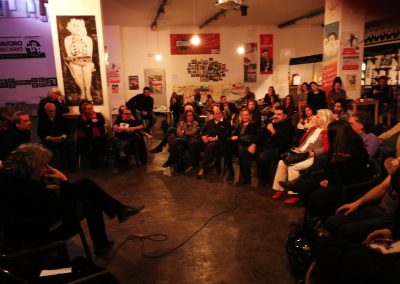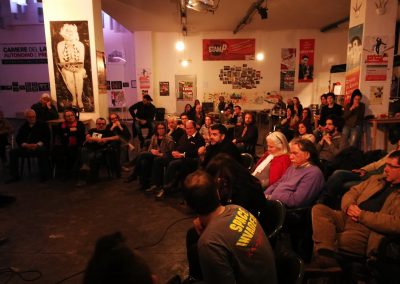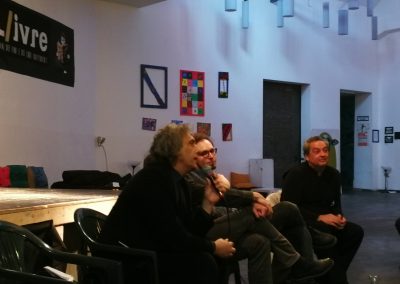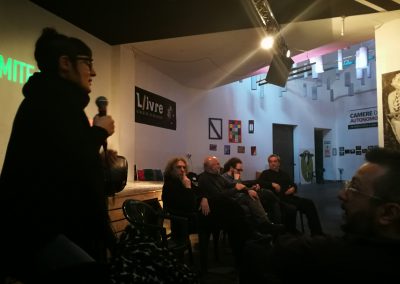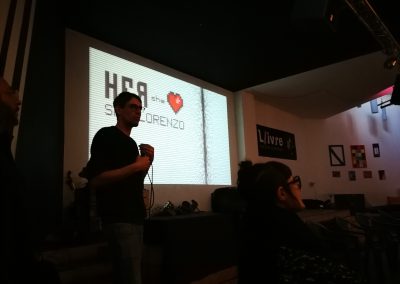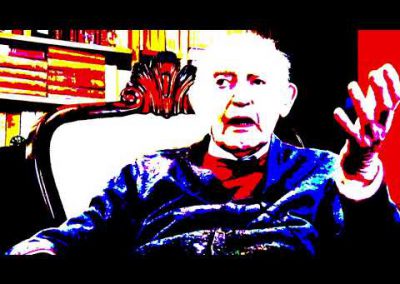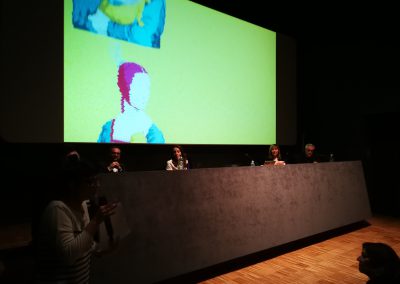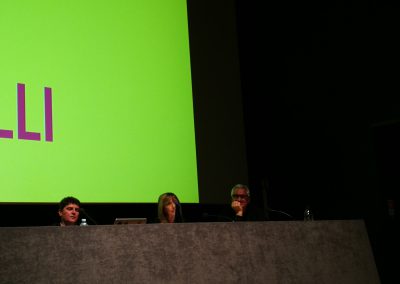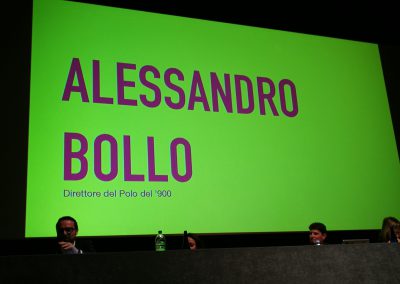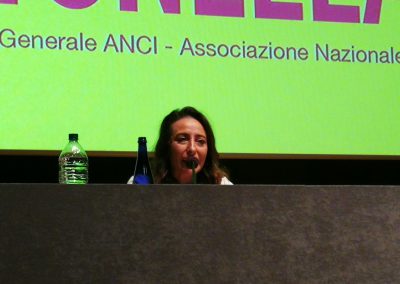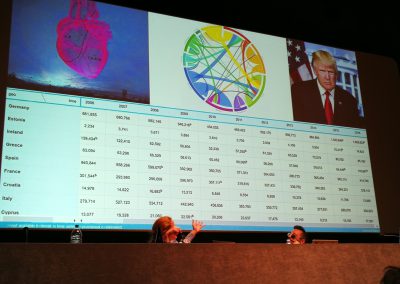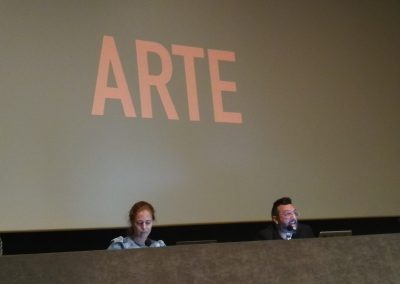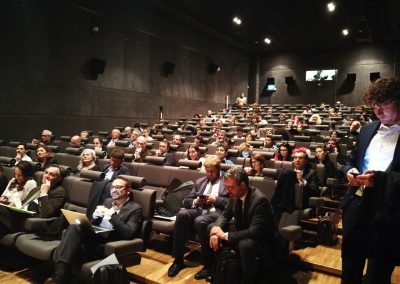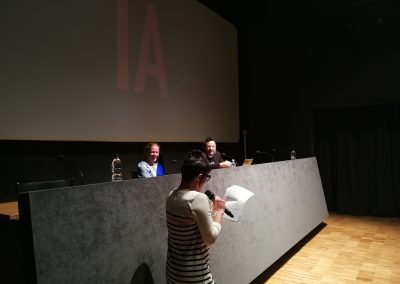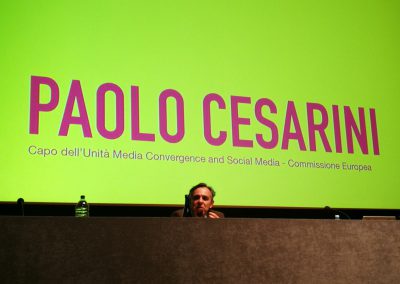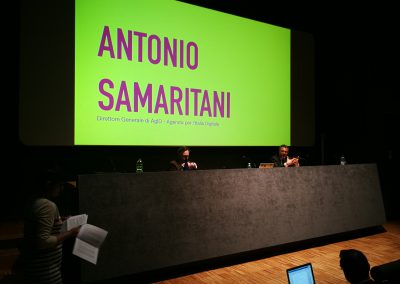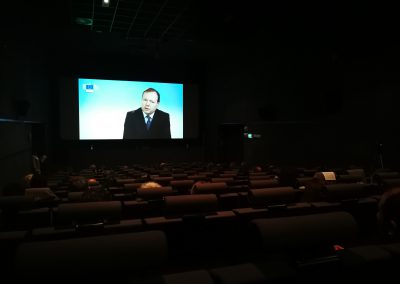Art, Data and Institutions: a recap of the festival and the event
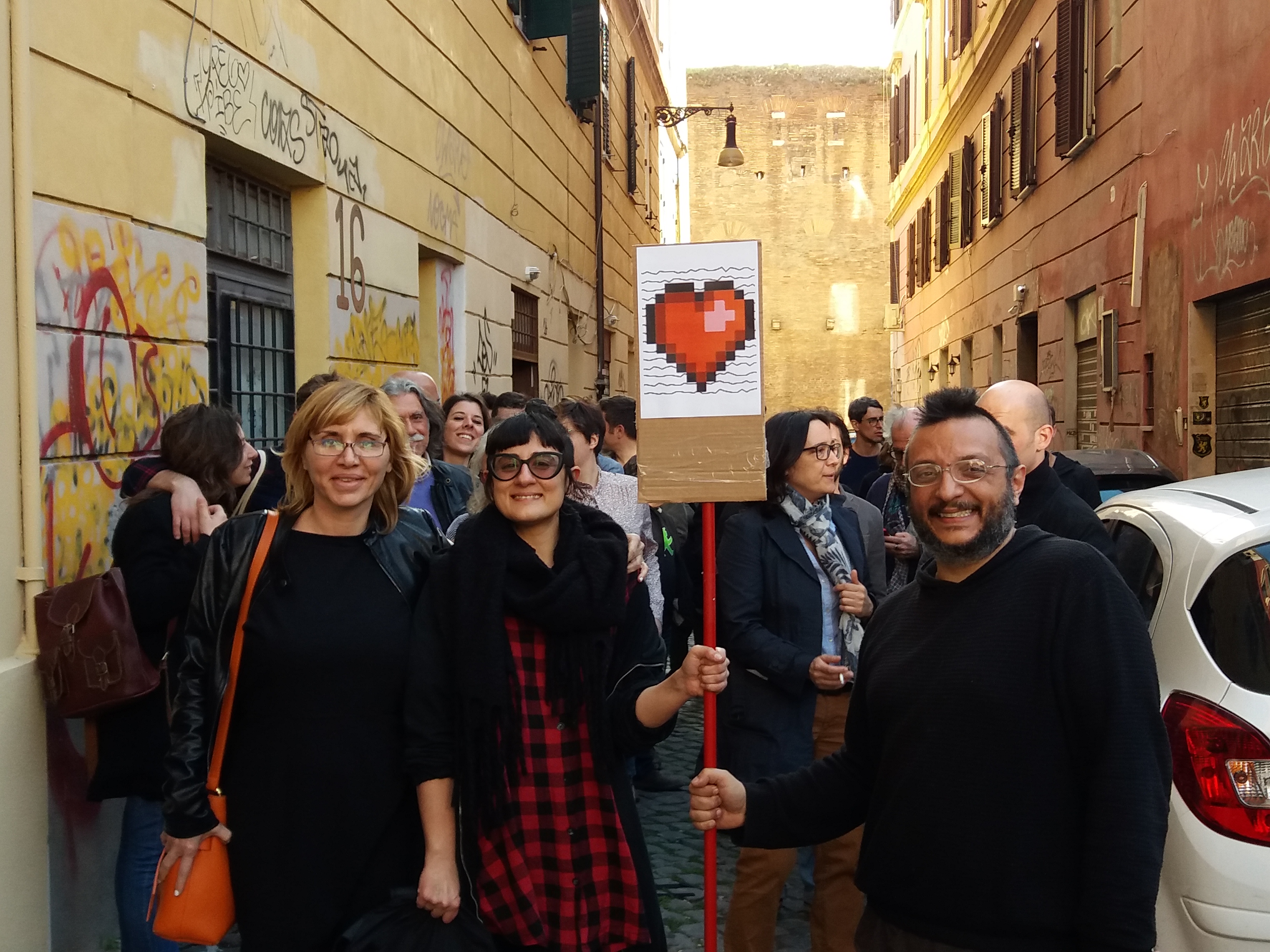
Art, Data and Institutions
Art, data and institutions, this is a way in which we could describe this past month at HER-Human Ecosystems Relazioni.
These have been intense days for HER and finally we are ready for a recap, to let you know what happened and what are the next steps.
On the 7th and the 8th of April HER: She Loves San Lorenzo – the first neighbourhood festival about Art and Data – occurs and, then, on April 16th a first meeting around the public dimension of Artificial Intelligence and the role of Art tooks place in Rome at the beautiful Palazzo delle Esposizioni.
Let’s see what happened.
HER: She loves San Lorenzo
The festival started in the afternoon of April 7th, with a visit to HER’s headquarters. Here we made some welcomes and introductions and then we displayed the first data-driven artworks:
- OneAvatar is a performance in which a whole-body wearable technology is used to connect the physical body to the digital one, so that what is felt “digitally” is also experienced physically, exploring the implications of this interconnection (philosophical, legal, ethical, social)
- 10 Minutes in Detroit, which is a video entirely produced with the social networking messages produced in 10 minutes during a Saturday afternoon in Detroit, USA. The video allows viewers to gain a glimpse of the complexity of the phenomena that are taking place on social networks and of the enormous quantities of data that are being generated each second in a city, also suggesting the exploration of the critical aspects of these facts
- Mosaico Torino, which is an artwork in which a landscape of the city is completely reconstructed through the images which people contribute, in a crowdsourced, data-driven experience, in which computer vision and data analysis coexist with beautiful art representations
Then the upcoming Data Driven Innovation summit was introduced, as a further chance to explore the technological cultural and social implications of data in our society.
Accelerator is an exploration of the ways in which sciences “accelerate” culture. While performing their research in the lab, scientists also introduce breakthrough innovations in society: for example think about genetics, medicine, or physics. This influences society at large, bringing new cures, concepts, materials, objects and, in general, visions into people’s lives and discussions. Accelerator tries to measure this. By collecting data from the web and social networks, the artwork uses natural language analysis to gain understandings about how the concepts and words of scientific discoveries from 2001 to the present day have entered the language people use in the world. Going through maps, timelines and other visualizations, this understanding is transformed into a data-driven meditative experience.
First up was Arianna Forte, also curator of the festival, who introduced the BodyQuake performance (later on show) and the concept of Body-pathy which could be associated to it. Then Elena Giulia Rossi introduced presented us to a series of meaningful experiments in art and data, which resonated with the implications originating from this massive presence of data in our cultures. Last, Valentino Catricalà created a historical narrative of the ways in which arts, sciences and technologies have collaborated in the past, arriving at explaining us the reasons why this type of interconnection makes perfect sense in our present.
As a final surprise, we welcomed the young winners of the Tecnopia Award with the Homo Ex Machina Foundation. President Salvatore Iaconesi was invited to be this year’s testimonial for the prize, and had dedicated a challenge to participants, dealing with the possibility of creating positive impacts which were able to last for long timeframes. The fantastic 18-year old winners came up with a wonderful response which assumes education as the only possible way to confront with this fundamental challenge. Check them out!
The performance takes medical data on epilepsy and transforms it into an action of sharing and empathy, in which the performer wears the medical data through a body projection mapping. The entire performance, in all its video and sound elements is generated through data. The visualizations and sonifications are also part of an experiment in which artists have tried to innovate the ways in which medical data is visualized and analysed, in full collaboration with scientists.
The discussion at the end of the show and the concert by Circuiterie ended the evening and prepared us for the next day of the festival.
The video was the trigger for an open conversation among Luca Sossella, Lucio Saviani, Guido Vetere and Stefano Capezzuto, who explored the theme from the points of view of philosophy, sociology, technology, psychology and many more, trying to understand the limits, perils, opportunities and possibilities which can originate from including AI in public services and systems.
The event finished with some important announcements (see below for the takeaways and next steps): the announcement of a neighbourhood school which uses AI, Data, Art and Design to explore the existential condition of human beings in these times of transformation, involving schools, university, enterprises, shopkeepers, social spaces and all the inhabitants of the neighbourhood, in inclusive, innovative ways.
See below in the conclusions to know more.
AI and Public Administration: the public dimension of innovation and the role of Art
Next up was the event on April 16th at the Palazzo delle Esposizioni in Rome, where we brought together the European Commission, the Italian Agenzia per l’Italia Digitale (the agency for the digital agenda of the Italian Government), institutions, important cultural operators and enterprises to discuss how Artificial Intelligence could play a role in the evolution of culture, markets and people’s public lives (including their access to public services).
An opening panel explored the ways in which governments such as the European Union and the Italian Government are exploring AI. Participants were Roberto Viola – General Director, DG Connect – European Commission –, Antonio Samaritani – General Director, AgID – Agenzia per l’Italia Digitale – and Paolo Cesarini – Head of Unit, Media Convergence and Social Media – European Commission. What emerged was that efforts are being made in systemic ways, to integrate Artificial Intelligence into a systems approach, as a breakthrough technology whose purpose is to proceed in the direction of enhanced human centrality, well-being, inclusion and towards the possibility to protect and value diversity. In this sense, all of the participants agreed on the crucial role that arts and design can contribute to achieve these goals.
Then, the roundtable was introduced by a presentation in which Salvatore Iaconesi – President, Human Ecosystems Relazioni – and Fiorenza Lipparini – Director of Research, PlusValue, also a co-organizer of the event – explored possible scenarios. On the one hand, noting how arts and design (and, more in general, creativity) can become strategies for enhanced innovation, market disruption and to create new models for economy and governance, based on ethical, inclusive approaches. On the other hand, noting how the communicative role of Arts and Design are of crucial importance in today’s need to find ways to confront with complexity in the public arena, with shared efforts and narratives.
The roundtable proceeded with Alessandro Bollo – Director, Polo del ‘900 –, Antonella Galdi – General Vice Secretary, ANCI – Associazione Nazionale dei Comuni Italiani –, Vincenzo Napolano – Communication at INFN, Istituto Nazionale di Fisica Nucleare –, a message from Catterina Seia – Vice President, Fondazione Fitzcarraldo –, Marcella Mallen – President, Fondazione Prioritalia –, and Nicola Martinelli – Founder and President, eFM .( Soon we will release the videos of the interventions.) What emerged was a profound understanding of the ways in which the technologies and approaches we are talking about (including Artificial Intelligence) have a great role (and power) in redefining the form of public services, and of the ways in which we confront with reality, access information, participate to civic life, relate, learn, consume and entertain ourselves. This corresponds to a shift in the existential condition of the human being which must be addressed. Addressing? this condition (and its innumerable psychological, cultural, economic, social and political implications) cannot be a mere technological/technical action, but must engage other sciences and approaches, in a social content and with full participation (and desire to experiment in and with society) of cultural operators, foundations, institutions, organizations, companies and citizens themselves.
The conclusions were left to us and we
- tried to summarize this convergence: there is the concrete possibility to bring up a second “Made in Italy” season, which uses Art and Design to transform the results of technological and scientific innovation into things that are more than just product and services, but cultural artifacts, creating a wider, more significative narrative; we can create new, European and Mediterranean models in which Arts and Design closely collaborate with the operators of Industry, Governments, Economy, Culture and with the citizens themselves, to bring up more meaningful, competitive, innovation.
- we then introduced possible next steps, which leads us to the ending of this long article
Next Steps
Where can we go next?
First of all, we think it is of fundamental importance to highlight the conclusions of the conference:
there is the concrete possibility to bring up a second “Made in Italy” season, which uses Art and Design to transform the results of technological and scientific innovation into things that are more than just product and services, but cultural artifacts, creating a wider, more significative narrative; we can create new, European and Mediterranean models in which Arts and Design closely collaborate with the operators of Industry, Governments, Economy, Culture, Cultural Heritage and with the citizens themselves, to bring up more meaningful, competitive, innovation.
This, already, is an important direction to follow.
Then, we would like to disclose the next steps which we are bringing up, and to which you can participate:
- HER: She Loves Data, a center for Arts + Data. First step is infrastructural. In Rome, within our research center, we have established a center for Arts and Data, which will explore data-driven innovation through Art. The name is HER She Loves Data, and it will proceed in creating important initiatives around all of the topics which we have discussed here.
- A Neighbourhood School in AI + Data. This is a fundamental experiment, the first of its kind in the world. On May 6th 2018, in Rome, in the San Lorenzo neighbourhood, at ESC Atelier, there will be the first meeting to create a school. A new type of school, which brings together all the actors on the territory (like shopkeepers, schools, university, companies, and inhabitants, young and small) into creating learning experiences of novel types, to explore and gain understandings about the shift in our existential condition due to AI, Data, Algorithms and more, and to understand, learn, and discuss how to use these technologies, how to bring them into a shared, inclusive discourse.
- The AI Pilot with the Polo del 900. In Turin, with the Polo del 900, we will start a pilot project for an AI of a new type. An AI that, as all other AIs, will help to classify and process the incredibly valuable contents of the archives hosted by the Polo. But it will go a step further. Firstly, by exploring how AI will enable new ways of accessing, interacting and relating with archives and databases, individually and socially, accessing data through images, colors, concepts and more. And, then, by creating inclusive processes, through which the inhabitants of the city (young, elderly, adults, students…) build the essence of AI’s mechanisms. For example through workshops in which citizen train AI and, while doing this, learn the inner workings of AI, and their implications. Or festive occasions and events, in which we learn how to find horses, and flags, and buildings, and famous characters in the documents of the archive, and to make new connections, and to link it with our own lives and interests, and how to create value through that, for all society. The pilot will start soon, around May, and the first public interactions are planned for after the summer.
We warmly urge you all to take action. Contact us for any information, and keep in touch using this website and social media to learn about the upcoming activities and initiatives. There is a possible role for you all.
